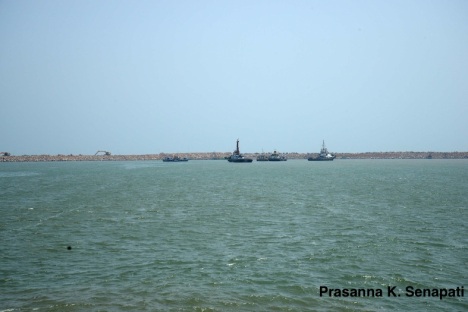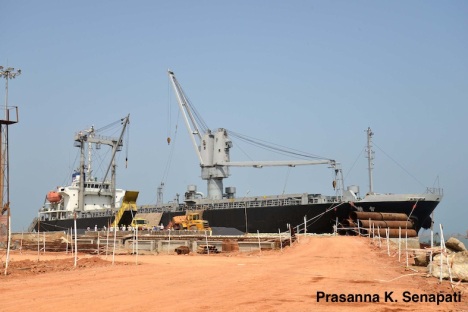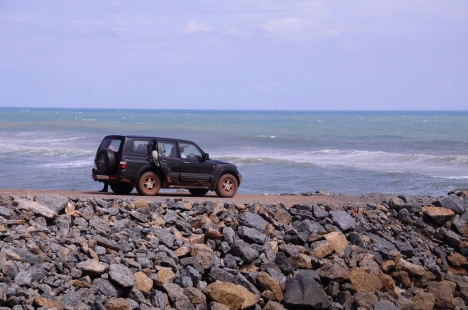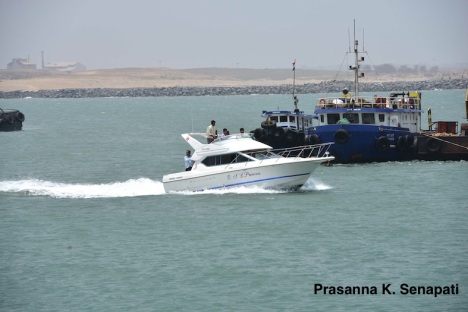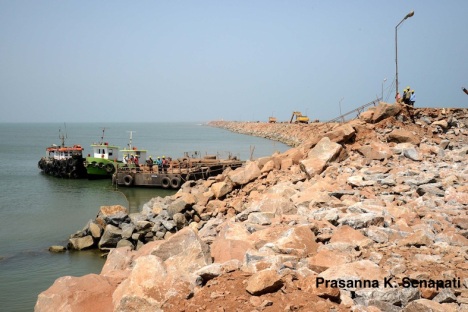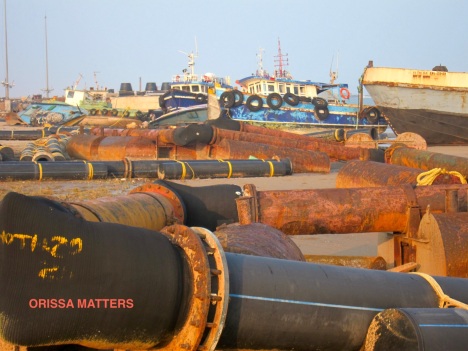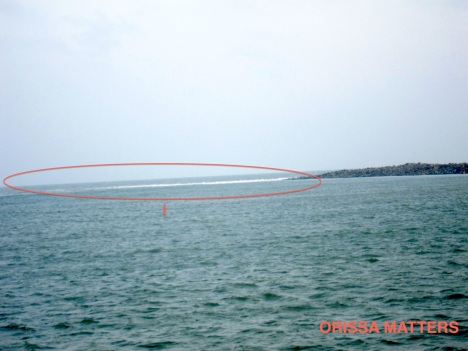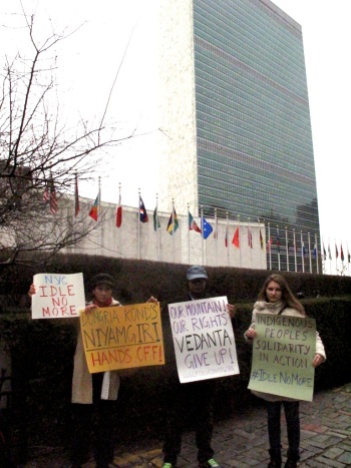Subhas Chandra Pattanayak
Historian Dr. Amiya Kumar Mohanty argues in his book ‘State and Government in Ancient Orissa’ that the main cause of Kalinga war was perhaps Ashoka’s desire to occupy the ports of Orissa. By using these ports, the people of ancient Orissa, famous as the ablest seafarers amongst people of India had become the first and the most acclaimed founders of colonies and commercial hubs in foreign lands. The old Prome, in Burma, often mentioned in the Mon records as Sikset or Srikset, was the ancient Oriya colony, known to all as an excellent centre of trade and commerce. Mentioning this in Brahminical Gods in Burma, Dr. Nihara Ranjan Roy says, “Likewise the earliest colonization of the Malaya Peninsula and Java had probably been made from Kalinga, for Hindus of the Peninsula and the islands were and are still known as Kling”. According to ‘The Age of Imperial Kanauj’, Oriya culture and commerce was so deep in whole of Malaysia that outsiders were calling it “Kalinga”. Our research has led us to write in these pages earlier that Melaka was established as a commercial metropolis by Orissa’s famous prince Hambira, the eldest son of the Oriya emperor Kapilendra Dev. Behind all such colonizing and commercial success in foreign lands by the ancient Oriyas were the excellent ports and waterways of Orissa. Even, much after Oriya mana was eclipsed by Vedic imperialists (Sri Jaya Devanka Baisi Pahacha, Subhas Chandra Pattanayak, Bharata Bharati, Cuttack), and the splendid land was occupied by the British through treachery and plundered by envious neighbors serving the British as their native servants, the vessels of Orissa were found to be uniquely excellent. They were “by far the best that I ever saw in any part of India”, wrote Mr. E.Watson, Judge of Calcutta Court of Circuit in a communication to W.B.Bayley, Secretary to British Government in the Judicial Department, on 3 May 1817. So, unquestionably the Oriyas of the past were the masters of the waters; and owners of the best of the vessels ever seen in India; and their coast was the busiest in seafaring activities.
One of these ports was Gopalpur, mentioned as ‘Apheterion’ in table VI of Ptolemy’s Geography (The Ports of Orissa, Dr. Kartikeswar Patra, Panchashila, p.16).
Time had taken its toll under unfortunate political developments and it was pushed into decay and abandonment.
In the last part of his first phase of two-terms-long chief-ministry, J.B.Patnaik tried to revive it, to begin with, as an anchorage in 1987.
But as fellows of sinister purposes infested administration with increased velocity, it was made defunct from February 2002 till September 2006, when, a concept was mooted to develop it into an all weather port. Steps were taken in 2006 in this regard by calling for international bidding. By then, under the incumbent chief minister, Orissa was being forced into colonization by non-Oriyas in every sphere including seaports. And the international bidding was sure to handover Gopalpur, the most active port of ancient Kalinga, to any non-Oriya.
 In that circumstances, an Oriya of exceptional entrepreneurial zeal and merit, Sri Mahimanand MIshra, decided to bid for the port, as a part of his mission to upkeep Oriya mana.
In that circumstances, an Oriya of exceptional entrepreneurial zeal and merit, Sri Mahimanand MIshra, decided to bid for the port, as a part of his mission to upkeep Oriya mana.
He had to face repeated mischiefs played by non-Oriyas from the moment he made his bid for the Port. Even, environmental clearance sought for in 2007 had to limp till end of 2011. Equipped with environment clearance, the project proceeded in right earnest. The highly haughty sea had to give way to a calm harbor under a 1750 meter breakwater barrier created by Mr. Mishra and his dedicated team in remarkable speed with utmost precision.


With the first vessel M. V. Wise entering into its harbor channel on 23 May 2013, commercial operation of the “all weather port” commenced on 29 May 2013 and since then seven vessels were handled before Phailin had its landfall in the port itself.
This being the only port built up and controlled by an Oriya in the long coast of Orissa, it should have been proper for the Chief Minister to have visited the devastated site when he visited the storm struck district of Ganjam. He could have, thereby, stood with 4776 workers and 376 executive staff of the port in that moment of deep distress. But he didn’t. Had he gone to Gopalpur, he could have had a firsthand view of how severe was the damage to the port. However, on the very same day of his tour to Ganjam, this reporter had reached the spot of wreckage of Gopalpur, in course of acquiring firsthand view of the devastated district along with media consultant Pabitra Kumar Maharatha.
Phailin had its landfall on this Port. And, being an anabatic cyclone, its entire intensity hammered the port with murderous fierceness while rushing upwards in menacing speed. General Manager, HRD of the port, Mr. B.K.Ojha described how wind startled them in the very morning of Oct.12 at 8 AM. The port officials, who had ensured that the port workers leave for safer points much ahead of the storm, brought all the staff members to office campus for their safety. By 2 PM the wind picked up alarming speed that became horrifying by 5 PM. A lull came for a few minutes; and then, the catastrophic cyclone hit the port.
I am giving below a few pictures of the port taken months ahead of Phailin when work was going on to make it a complete all weather port. The pictures are from Cuttack’s well known photographer Prasanna Kumar Senapati.
The administrative complex thus far built, simultaneously constructed
1750 meter long breakwater had ushered in tranquility to the harbor where within a few months of commencement of commercial operation, as many as seven distinguished vessels were brilliantly handled heralding a promising future for the port.
And, the port was agog with activities to welcome the promising future.
Phailin punctured the activities and precipitated ruin.
Vessels were thrown up to the shore; Barges and dredgers were almost sunk.
Phailin was so violent on the sea that 750 out of the 1750 meter long south breakwater was shattered and submerged by the force of rising waves. The picture below shows combers roll over the crumbled, submerged portion of the breakwater barrier.
A high functionary of GPL, General manager HRD, Sri B. K. Ojha helped us have an on-the-spot picture of the extent of damage and destruction the storm had perpetrated vis-a-vis the precautions taken for withstanding the devastation.


The State did not pay any specific attention to how the port was to manage with the disaster, even though it was known that the storm was to have its landfall at Gopalpur. But, none of the 4776 workers empaneled by the port management suffered any casualty due to meticulous precautionary steps taken by GPL whereas the entire staff comprising 376 personnel and their families were safe and secured in the ramparts of the port itself with total solidarity offered to them by the authorities in that terrifying time.
So devastative was the impact of the storm that it may generally be apprehended that the port would require years to rebuild itself.
 But, glory to imperturbability, Mr. Manmohan Maharana, Director of GPL, when I met him, was already in the job of restoring the port to its lost shape. “Within two to three months, we would certainly make the port rebuild and perfectly functional”, he declared. He was at that time exploring how quickly to procure survey boats from Mumbai to have a precision survey of the breakwater line so that its reconstruction can commence and to find out if any boat has sunk in the harbor channel to take up clearance thereof for quick use of the harbor. Arrangements had already begun to lift up the half-sunk barges and dredgers and restore the site office and inter-connectivity including roads for expeditious completion of reconstruction.
But, glory to imperturbability, Mr. Manmohan Maharana, Director of GPL, when I met him, was already in the job of restoring the port to its lost shape. “Within two to three months, we would certainly make the port rebuild and perfectly functional”, he declared. He was at that time exploring how quickly to procure survey boats from Mumbai to have a precision survey of the breakwater line so that its reconstruction can commence and to find out if any boat has sunk in the harbor channel to take up clearance thereof for quick use of the harbor. Arrangements had already begun to lift up the half-sunk barges and dredgers and restore the site office and inter-connectivity including roads for expeditious completion of reconstruction.
Guts of Gopalpur too strong to be subdued
And, as we watch, we are sure that the dedicated team of compatriots that man the GPL will finish the reconstruction in time. We had seen its well furnished site office made of steel was turned upside down by the gale-force gust of the anabatic storm. The picture below bears the signature of the savagery of the storm. But the picture at the bottom shows that the storm has failed to damage the guts of Gopalpur. The site office has already become functional on restoration.




